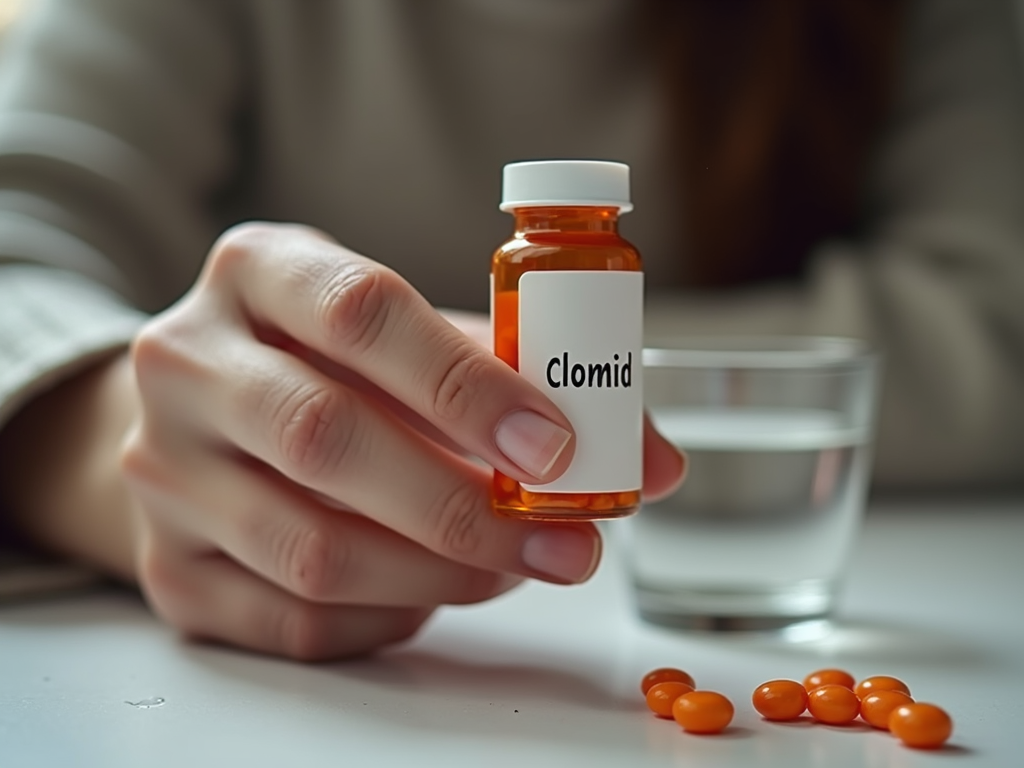Comparing Ovulation Inducers and Their Side Effects: A Comprehensive Guide
April 10, 2025, 5:22 p.m.
If you're struggling with infertility, you might have heard about ovulation inducers. These are special medications that help stimulate ovulation, making it easier to conceive. But with several options available, how do you know which one is right for you? In this article, we'll compare the most common ovulation inducers, their effectiveness, and their side effects. Our goal is to help you make an informed decision about your fertility treatment.

What Are Ovulation Inducers?
Ovulation inducers are fertility drugs designed to stimulate the ovaries to release eggs. They are often the first line of treatment for women who have irregular or absent ovulation, a common cause of infertility. These medications work by mimicking or enhancing the body's natural hormones that trigger ovulation.
Common Ovulation Inducers
There are several types of ovulation inducers, each with its own mechanism of action, effectiveness, and side effects. The most commonly used ones are Clomiphene Citrate (Clomid), Letrozole (Femara), and Gonadotropins. Let's take a closer look at each.
Clomiphene Citrate (Clomid)
How It Works: Clomid is a selective estrogen receptor modulator (SERM). It tricks the body into thinking that estrogen levels are low, which stimulates the pituitary gland to produce more follicle-stimulating hormone (FSH) and luteinizing hormone (LH). These hormones then stimulate the ovaries to produce and release eggs.
Effectiveness: Clomid is effective for many women, especially those with polycystic ovary syndrome (PCOS). About 80% of women who take Clomid will ovulate, and approximately 40% will become pregnant within six cycles of use.
Side Effects: Common side effects include hot flashes, mood swings, breast tenderness, and nausea. There's also a risk of multiple pregnancies (twins or more), occurring in about 10% of cases. Less common but more serious side effects include ovarian hyperstimulation syndrome (OHSS) and vision changes.

Letrozole (Femara)
How It Works: Letrozole is an aromatase inhibitor, originally used to treat breast cancer. It works by lowering estrogen levels, which in turn stimulates the pituitary gland to increase FSH production, leading to ovulation.
Effectiveness: Letrozole is particularly effective for women with PCOS and those who do not respond to Clomid. Studies suggest that Letrozole may have higher pregnancy rates compared to Clomid in some populations.
Side Effects: Side effects are generally milder than those of Clomid and may include headaches, fatigue, and dizziness. The risk of multiple pregnancies is lower with Letrozole, around 5-8%. However, there is still a risk of OHSS, though it's less common.

Gonadotropins
How It Works: Gonadotropins are injectable hormones that directly stimulate the ovaries to produce multiple follicles. They contain FSH and LH, which are naturally produced by the pituitary gland.
Effectiveness: Gonadotropins are highly effective and are often used when oral medications like Clomid or Letrozole fail. They have a higher success rate, with pregnancy rates up to 20-30% per cycle, depending on age and other factors.
Side Effects: The side effects can be more severe compared to oral medications. Common side effects include bloating, abdominal pain, and mood swings. The risk of multiple pregnancies is higher, around 20-30%, and there's a significant risk of OHSS, which can be life-threatening if not managed properly.
Comparing the Ovulation Inducers
To make it easier to compare these fertility drugs, here's a summary table:
| Ovulation Inducer | Mechanism | Effectiveness | Common Side Effects | Risk of Multiples |
|---|---|---|---|---|
| Clomid | SERM | 80% ovulate, 40% pregnant in 6 cycles | Hot flashes, mood swings | 10% |
| Letrozole | Aromatase inhibitor | High, especially in PCOS | Headaches, fatigue | 5-8% |
| Gonadotropins | Direct hormone stimulation | 20-30% pregnancy per cycle | Bloating, abdominal pain | 20-30% |
This table provides a quick overview, but it's important to discuss with your healthcare provider which option is best for your specific situation.

Personal Insights and Experiences
Choosing the right ovulation inducer can feel overwhelming. Many women worry about the side effects and the emotional toll of fertility treatments. It's normal to feel anxious, but remember that you're not alone. Here are some common concerns and tips:
- Side Effects: While side effects can be uncomfortable, they are often temporary. Keep a journal to track how you feel and share it with your doctor.
- Emotional Impact: Fertility treatments can be emotionally draining. Consider joining a support group or talking to a counselor who specializes in infertility.
- Cost and Accessibility: Some treatments, like Gonadotropins, can be expensive. Discuss financial options with your healthcare provider or look into insurance coverage.
Remember, every woman's journey is unique. What works for one person may not work for another. Trust your instincts and work closely with your healthcare team to find the best path forward.

Conclusion and Summary
Ovulation inducers are powerful tools in the fight against infertility, but they come with their own sets of benefits and risks. Clomid is a common starting point, especially for women with PCOS, while Letrozole offers an alternative with potentially fewer side effects. Gonadotropins are more potent but carry higher risks and costs.
When comparing ovulation inducers and their side effects, it's crucial to consider your personal health, medical history, and lifestyle. Always consult with a fertility specialist to determine the best course of action. With the right treatment and support, many women go on to achieve their dream of parenthood.